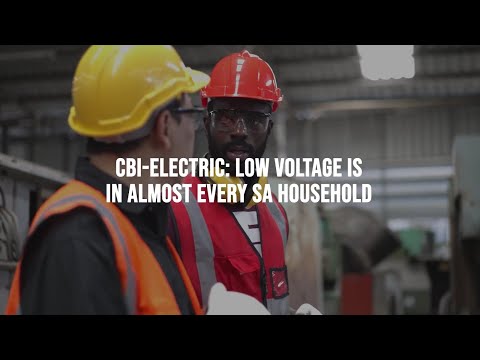
Across Africa, the cost of electricity is on the rise. Compounded by inflation and other economic pressures, this puts additional strain on consumers.
“With households already feeling the pinch, proactive measures to manage energy usage are essential to not only save money, but electricity too,” says Dr Andrew Dickson, Engineering Executive at CBI-electric: low voltage (https://CBI-LowVoltage.co.za).
Below, he shares 10 ways that people can do this by using smart home technologies to monitor, control and automate electrical appliances:
Knowledge is power: Understanding how much electricity your most commonly used appliances consume is the first step towards more efficient energy use. Many smart home technologies can track energy consumption, helping to pinpoint areas where you might be able to save.
Keep loads low: The load management capabilities of some home automation systems can help users ensure that only one heavy load-consuming appliance is switched on at any given moment, thereby ensuring optimal energy distribution.
Set limits: Users can specify the operating duration of appliances, like running the geyser for two hours to save electricity while also ensuring a hot bath.
Schedule appliance switch-on: Many regions have peak and off-peak hours when electricity costs more. Smart tech can help consumers schedule appliances to run during off-peak times whenever possible to save money. This can be done at specific times and on particular days.
Curb consumption in colder months: Electricity is more expensive during winter due to the high demand that results from using heaters, electric blankets and underfloor heating to keep cosy. Smart home devices could be used to determine when these appliances switch on as well as for how long. And while it can be hard to get out of bed on those icy winter mornings, a timer could be set to switch on a heater so that your bedroom is warm even before you wake up.
Environmental intelligence: Many of these technologies can react to environmental conditions such as weather or the setting and rising of the sun, enabling them to automatically switch specific loads on or off under these conditions. So, if a rainy day is detected for instance, your irrigation system can be preprogrammed to not switch on. This not only saves electricity, but water too, which can lower the total of your bill.
Remote control: Worried you left a device switched on? Smart home technologies allow users to turn connected appliances off from their smartphone and/or tablet from anywhere in the world. You can also use this capability to switch items on. To illustrate, you could turn your lights on before you get home from work in the evening.
Don’t just standby: When in standby mode (https://apo-opa.co/3wlQhxj), electronic goods like microwaves, computers, televisions, coffee machines, gaming consoles and even garage door openers can consume more electricity than when they are in use as they are only active for relatively short periods. While the obvious solution would be to unplug all non-essential appliances when inactive, smart home tech lets users switch off any items that are pulling power unnecessarily.
Incorporate renewable energy sources: With the adoption of rooftop solar steadily increasing across the African continent, smart home technology enables the effortless integration of these alternative power sources. For instance, the tech could be used to connect and disconnect from the grid as well as to ensure that the power produced by solar PV systems is used effectively and efficiently.
Avoid additional expenses: To protect appliances from voltage fluctuations that could result from power outages, users can set a minimum and maximum ‘safe operating voltage range’. If the voltage is unstable, the technology will monitor voltage levels and only allow power to the appliance once this is within a safe operating range.
“Contrary to popular belief, homeowners won’t need to rewire their homes to enjoy the benefits of smart home technologies. Devices like smart plugs, isolators and controllers can easily be installed by an electrician without the need for additional wiring or hubs,” points out Dr Dickson.
He concludes by saying, “With the cost of living set to increase over 2024, now is the time for Africans to put the power in their hands and save in areas that they can control.”
Distributed by APO Group on behalf of CBI-electric: low voltage.
For more information, go to https://CBI-LowVoltage.co.za or follow CBI-electric: low voltage on Facebook (https://apo-opa.co/3vvHgRW), Instagram (https://apo-opa.co/43Cr9hY), LinkedIn (https://apo-opa.co/4atY8Y6), X (https://apo-opa.co/4aw8czw), Threads (https://apo-opa.co/3VBbqxv) or YouTube (https://apo-opa.co/3IWb2Ce).
About CBI-electric: low voltage:
Established in 1949, CBI-electric: low voltage is a manufacturer and supplier of quality low voltage electrical distribution, protection, and control equipment. Previously known as Circuit Breaker Industries or CBI, the company specialises in the design, development, and manufacturing of circuit breakers, residential current devices, surge protection, wiring accessories, and metering products.
Head quartered in Johannesburg, South Africa, the company is a subsidiary of renowned JSE listed industrial group Reunert (https://www.Reunert.co.za/), with international operations across Africa, Asia, Australia, Europe, and USA.
CBI-electric: low voltage can be found in almost every home and has firmly become a market leader over the last 72 years while supplying products to authorities, utilities, manufacturers, commercial property developers, industrial, mining, telecommunications, and general power distribution applications.
In 2021, the brand launched its smart IoT (internet-of-things) home automation range, called the Astute Range.
